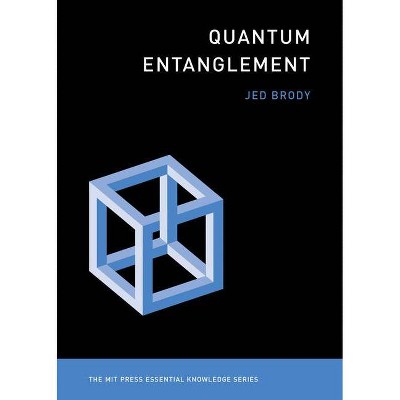Quantum Computing for Everyone - (Mit Press) by Chris Bernhardt (Paperback)

Similar Products
Products of same category from the store
AllProduct info
<p/><br></br><p><b> About the Book </b></p></br></br>"Quantum computing is a ... fusion of quantum physics with computer science. It incorporates some of the most stunning ideas of physics from the twentieth century into an entirely new way of thinking about computation. [It] is appearing more and more in the news: China teleported a qubit from earth to a satellite; Shor's algorithm has put our current encryption methods at risk; quantum key distribution will make encryption safe again; Grover's algorithm will speed-up data searches. But what does all this really mean? How does it all work? This book explains quantum computing to readers comfortable with high school mathematics"--<p/><br></br><p><b> Book Synopsis </b></p></br></br><b>An accessible introduction to an exciting new area in computation, explaining such topics as qubits, entanglement, and quantum teleportation for the general reader.</b><p>Quantum computing is a beautiful fusion of quantum physics and computer science, incorporating some of the most stunning ideas from twentieth-century physics into an entirely new way of thinking about computation. In this book, Chris Bernhardt offers an introduction to quantum computing that is accessible to anyone who is comfortable with high school mathematics. He explains qubits, entanglement, quantum teleportation, quantum algorithms, and other quantum-related topics as clearly as possible for the general reader. Bernhardt, a mathematician himself, simplifies the mathematics as much as he can and provides elementary examples that illustrate both how the math works and what it means. </p><p>Bernhardt introduces the basic unit of quantum computing, the qubit, and explains how the qubit can be measured; discusses entanglement--which, he says, is easier to describe mathematically than verbally--and what it means when two qubits are entangled (citing Einstein's characterization of what happens when the measurement of one entangled qubit affects the second as "spooky action at a distance"); and introduces quantum cryptography. He recaps standard topics in classical computing--bits, gates, and logic--and describes Edward Fredkin's ingenious billiard ball computer. He defines quantum gates, considers the speed of quantum algorithms, and describes the building of quantum computers. By the end of the book, readers understand that quantum computing and classical computing are not two distinct disciplines, and that quantum computing is the fundamental form of computing. The basic unit of computation is the qubit, not the bit.</p><p/><br></br><p><b> Review Quotes </b></p></br></br><br>Recently there has been a tremendous media buzz about the coming quantum computing revolution. Chris Bernhardt has masterfully crafted this short book to teach the basics to anyone interested in this fascinating field. The reader is not expected to know more than high school mathematics, and with that, this extremely accessible book will guide you through the many parts of quantum computing. <b> - Noson S. Yanofsky, Professor, Brooklyn College, Department of Computer and Information Sciences; coauthor of <i>Quantum Computing for Computer Scientists</i>; and author of <i>The Outer Limits of Reason</i> </b> <p/> Bernhardt has written a clear, no-nonsense introduction to quantum computing and information -- one that takes beginners by the hand and leads them up to a working understanding of quantum teleportation, Bell's inequality, Simon's algorithm, and more. I'll enthusiastically recommend this book to the next beginner who asks me.<b> - Scott Aaronson, David J. Bruton Centennial Professor of Computer Science and Director of the Quantum Information Center at the University of Texas at Austin; author of <i>Quantum Computing Since Democritus</i> </b> <p/> Will the bit ever be replaced by the qubit? Quantum computers now loom on the technical horizon. This essential text opens the door for technical readers to walk through a gallery of quantum effects leading to the basics of quantum computing. <b> - Keewatin A. Dewdney, Professor of Computer Science, University of Western Ontario </b><br><p/><br></br><p><b> About the Author </b></p></br></br>Chris Bernhardt is a Professor of Mathematics at Fairfield University. His area of expertise is dynamical systems, including low-dimensional dynamics and combinatorial dynamics.
Price History
Price Archive shows prices from various stores, lets you see history and find the cheapest. There is no actual sale on the website. For all support, inquiry and suggestion messages communication@pricearchive.us




















